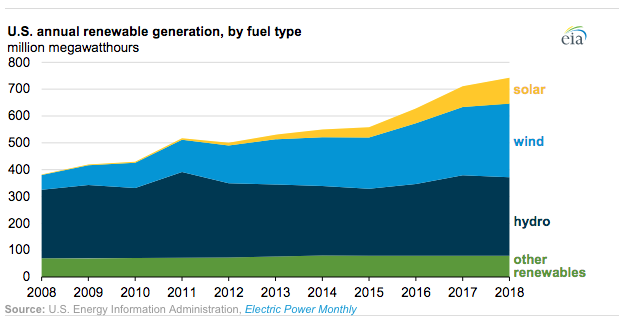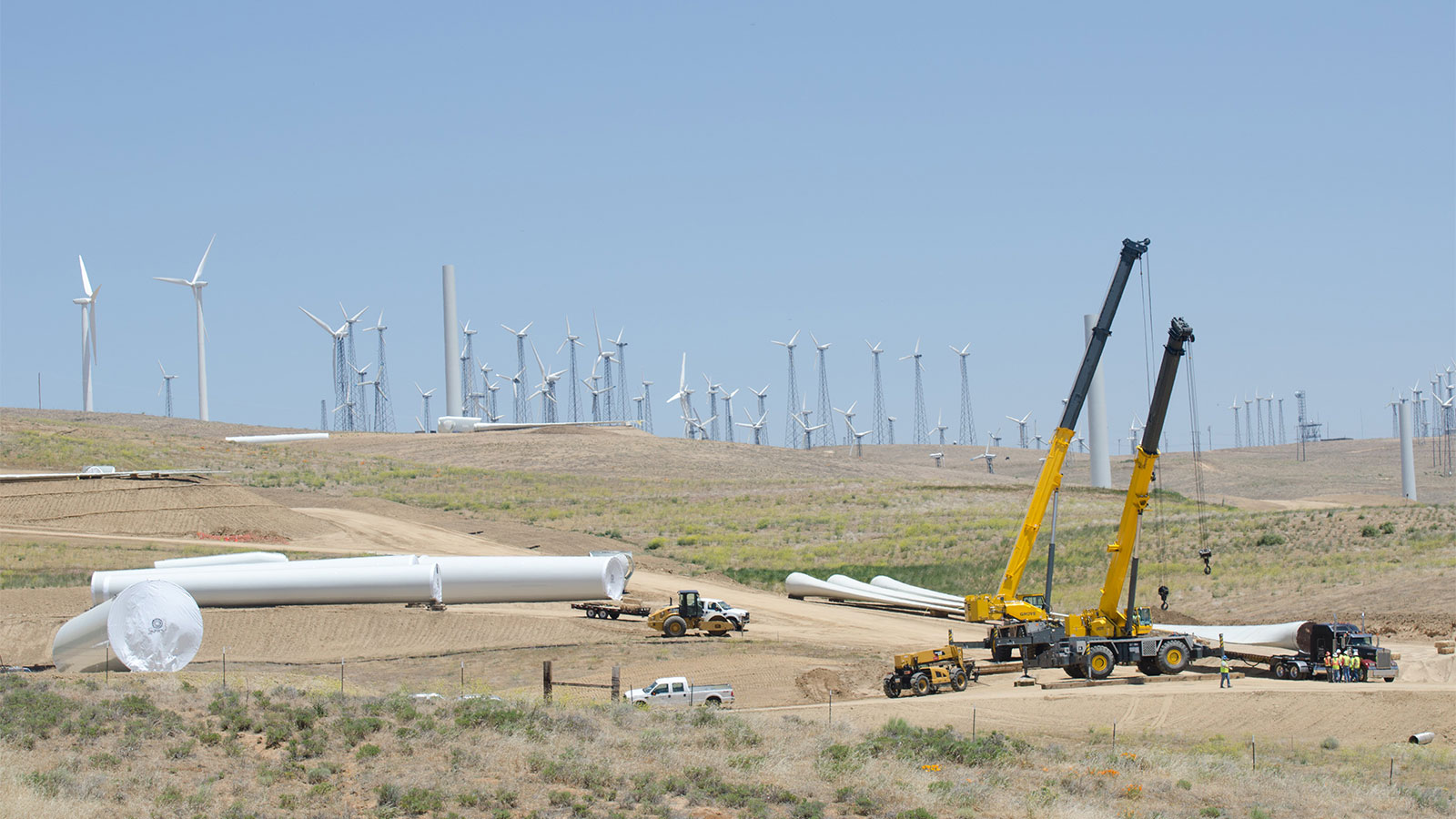Across the United States, workers are covering fields with solar panels, and big rigs are hauling massive turbine blades to wind-scoured ridgelines. This is what it looks like when renewable energy expands exponentially.
The amount of renewable electricity generated in the United States has doubled in the last 10 years, according to number-crunching out Tuesday from the U.S. Energy Information Administration.
And as impressive as doubling in a decade is, it understates the case. That’s because about 90 percent of that growth came from wind and solar: 57 million megawatt hours in 2008, and 301 million megawatt hours in 2018 — increasing more than fivefold in a decade.

So where do we stand after accounting for all that growth? Well, some 17.6 percent of the country’s power now comes from renewables.
It’s mainly electricity generated by hydroelectric dams (6.9 percent). Even after all that massive growth, wind only provides 6.5 percent and solar 2.3 percent of our electricity. Renewables like biomass and geothermal generate the last 1.9 percent.
Nuclear plants (not considered renewable but, hey, no greenhouse gases!) provided 19 percent of U.S. electricity in 2018. The remaining 63.4 percent came from fossil fuels.
That’s just electricity. If we zoom out to include all energy (petroleum for cars, natural gas for furnaces and water heaters) it’s a different picture: Renewables account for around 11 percent.
So we still have a long way to go. But consider this: If renewables sustain this rate of growth, the United States would be roughly on track to get all of its electricity from carbon-free sources by 2050. The question, of course, is whether that exponential growth can continue. The size of the job is staggering. Those solar-panel covered fields will have to be five times as big in 10 years, and 25 times as big in 20, and 125 times as large by 2050. Crazier things have happened.




